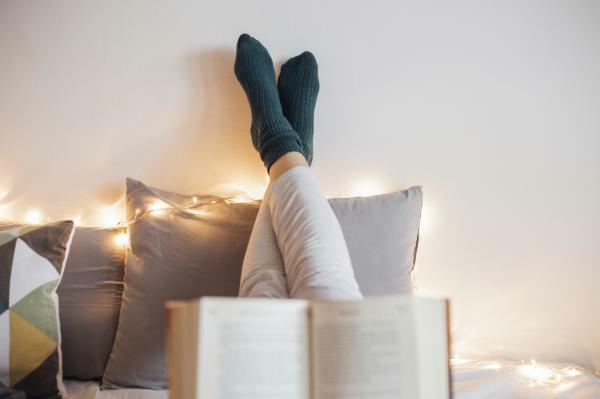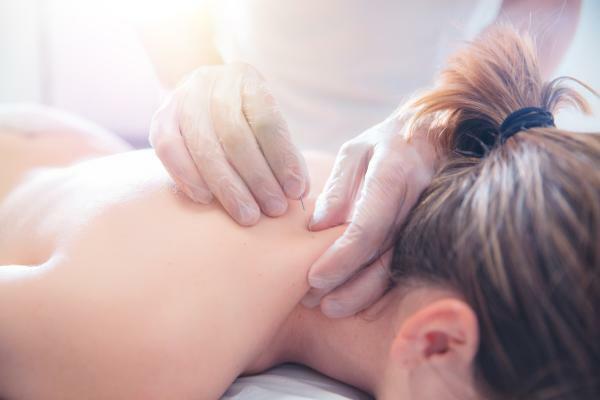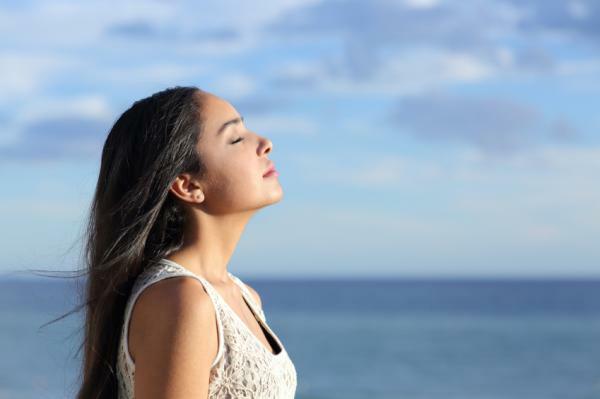
The objective of breathing techniques is to facilitate voluntary control of breathing and automate this control so that it can be maintained even in situations of greater anxiety or stress. Correct breathing habits are very important to provide the body with the oxygen necessary for proper functioning. If the amount of air that reaches the lungs is insufficient, the blood is not properly purified and is loaded with substances toxic, so that insufficiently oxygenated blood contributes to increasing states of anxiety and muscle fatigue, therefore, with In breathing exercises we aim to achieve, in addition to controlling breathing, to learn a good relaxation technique that allows us to help to maintain our psychosomatic state in optimal conditions to face the environment that surrounds us.
To do this, we will take the air very slowly through the nose and expel it, also very slowly, through the mouth while we try to listen to the sound emitted when expelling the air.
Index
- Lung breathing
- Diaphragmatic breathing exercise
- Complete breathing: pulmonary and diaphragmatic
- Exhale
- Overgeneralization
- Focused attention on breathing
- Deep breathing to calm anxiety
- Area of application
Lung breathing.
objective
Learn to direct inspired air to the upper part of the lungs.
With lung breathing
We bring the air to the upper part of the lungs inhaling through the nose very slowly, we hold and expel through the mouth, also very slowly, while we listen to the sound as we are expelling it, we will try not to let the abdominal area move.
Process
Place one hand on the belly and the other on the chest so that the effects of each inspiration-expiration cycle can be better perceived. Next, it is about directing the air that we breathe in towards the upper part of the lungs, which will raise the hand placed on the chest, but without moving the one placed on the stomach or on the belly.
Diaphragmatic breathing exercise.
objective
Learn to direct the inspired air into the lower and middle part of the lungs. This is an essential breath since the diaphragm is regarded as our second heart.
With diaphragmatic breathing
We bring the air to the abdominal area in the same way as before. In this case we will try to keep the thoracic area from moving.
Process
It is about directing the air towards the lower part, feeling how now it is the belly that swells with the entry of the air. This exercise tends to represent some difficulty at first because it is the aspect of breathing that we use the least, but which is nevertheless fundamental and the most important. To achieve this we can try to help ourselves by swelling the belly, against the clothes or against the hand placed on it, while we breathe in the air. It is important to indicate that inspiration should not be forced but slow, you do not have to run when taking the air, you have to do it very slowly while controlling your entry through the nose until reaching its destination, in this way in addition to breathing properly we will increase the self-control.
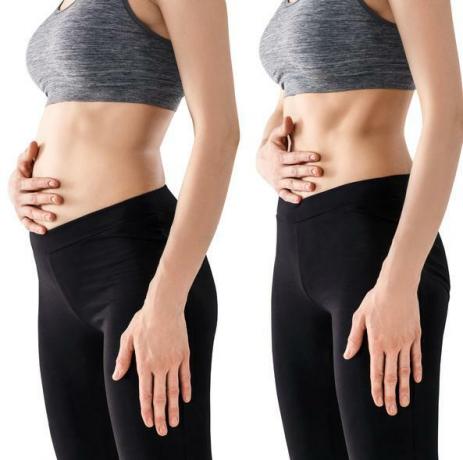
Complete breathing: pulmonary and diaphragmatic.
objective
Learn to take a full inspiration.
Process
It is about directing the air of each inspiration first to the belly area and then to the upper part of the lungs. It is important to mark 2 different times in inspiration, one to direct the air to the abdominal area and the other to the upper part of the lungs.
Exhale.
objective
Learn to perform more complete and regular respiratory alternation (inspiration plus expiration).
Process
After the inspiration, we will keep the inspired air for a few moments, to ensure that the gas exchange occurs correctly, and we will expel it slowly through the mouth, closing the lips enough so that a soft sound is produced when the air. With the help of the feedback that the noise produces, we can regulate their expiration, making it slow, slow and constant but never abrupt.
Duration
It can be between 2−4 minutes. The exercise is repeated 3–4 times, with rest intervals of 2–3 minutes, therefore, the approximate time is between 15–20 minutes. The more times we practice throughout the day, the better so that when we really need it we have the procedure perfectly controlled.
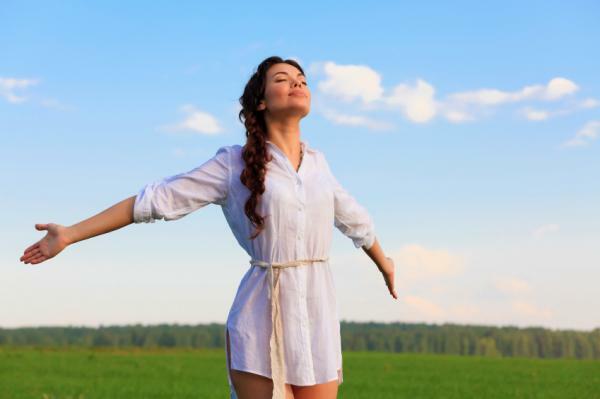
Overgeneralization.
objective
Learn to use and generalize the control of breathing in different situations, both normal and anxious.
Process
It consists of repeating the breathing exercises several times throughout the day in different positions and situations in order to learn to use the technique in everyday conditions, both normal and adverse. To do this we will change the position (sitting, standing, walking ...), the activity (watching TV, driving, working ...), the modality (eyes closed, eyes open) and environmental conditions (noise, presence of other people,...). It is important that the practice be generalized to the more situations the better, until you achieve your total control.
Duration
The more times and in the face of a greater number of activities or situations we do it much better.
In addition, it is important that after each exercise cycle we analyze both the problems that may have arisen and the benefits detected. As with muscle relaxation, both control and benefits will increase with practice.
Focused attention on breathing.
Is a breathing technique very practical. It consists of the person focusing their attention on their own breathing, allowing the natural and involuntary process of breathing to take place under total voluntary control, which usually causes breathing to become slower, deeper and more controlled, providing all of this a great benefit psychosomatic.
It is especially useful to face anxiety or conflict situations both internal and external.
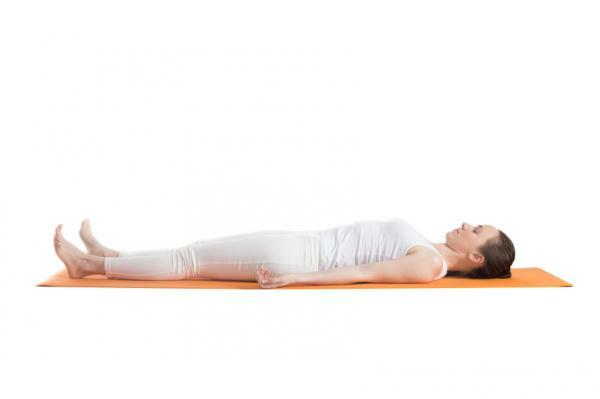
Deep breathing to calm anxiety.
It consists of adopting a respiratory pattern that implies, on the one hand, a deep inspiration, in 2nd place a period of retention of air inside the lungs (5−10 seconds) and in 3rd place an expiration slow.
This procedure allows to achieve a state of relaxation quickly although it is not a very deep state. Using this exercise we will be able to produce very important effects in a few minutes. It is very useful for cope with stressful situations and especially to reduce anxiety problems, allowing us to face the different situations that may arise but with levels of anxiety much lower, thus allowing our responses to be much more effective, adaptive and controlled by keeping our body in optimal conditions of oxygenation.
Area of application.
The application of relaxation techniques through breathing slowly and voluntarily controlled is very numerous. In all problems on the basis of which the anxiety (phobias, unjustified fears, irrational cognitive responses, school problems, confrontations with more or less complex situations ...) stress and its health implications (insomnia, headaches, tics, stuttering, aggressiveness control, impulsivity, eating, social or personal disorders ...) and, in general, in the face of any type of problem, both physical and psychological.
This article is merely informative, in Psychology-Online we do not have the power to make a diagnosis or recommend a treatment. We invite you to go to a psychologist to treat your particular case.
If you want to read more articles similar to Relaxation techniques through breathing, we recommend that you enter our category of Meditation and relaxation.
Bibliography
- Amutio Careaga, A. (1999): Theory and practice of relaxation. A new training system. Barcelona: Martínez Roca.
- Avia, M.D. (1990). Cognitive and self-control techniques in J.Mayor and E.J. Labrador (eds.). Behavior Modification Techniques Manual. pages 330-360, Madrid. Alhambra.
- Bastida de Miguel, A.Mª. Importance of applying third generation psychological therapies in the resolution of a case of fibromyalgia. XI Virtual Congress of Psychiatry (18cof345023). Interpsiquis - February-March 2010. Psychiatry.com
- Berstein, D. and Borkovec, T.D. (1983). Progressive Relaxation Training. Bilbao: Desclee de Brower.
- Cautela, J. R. And Groden, J. (1985): Relaxation Techniques. Barcelona: Martínez Roca. (Original, 1978)
- Echeburúa, E. and Corral, P. (1991). Psychological treatment of anxiety disorders. In G.Buela and V. Caballo (eds.): Applied clinical psychology. Madrid, XXI century.
- Joseph. R. Cautela and June Groden. Relaxation techniques. Editorial Roca.
- Labrador, F. (1992). Systematic Relaxation and Desensitization Techniques. Madrid Business University Foundation.
- Labrador, F..; De la Fuente, M.. and Crespo, M. (1995). Activation control techniques: relaxation and breathing. In F.J. Labrador; J.A. Cruz and M. Muñoz (eds.), Manual of behavior modification and therapy techniques. pages 367-395, Madrid. Pyramid.
- Mars Llopis, Vicente and Madrid López, Nacho. Progressive Relaxation.
- Smith, J.C. (1985). Dynamics of relaxation. Gerona: Editorial Tikal.
- Smith, J. C. Cognitive-behavioral training for progressive relaxation. Bilbao, DDB

